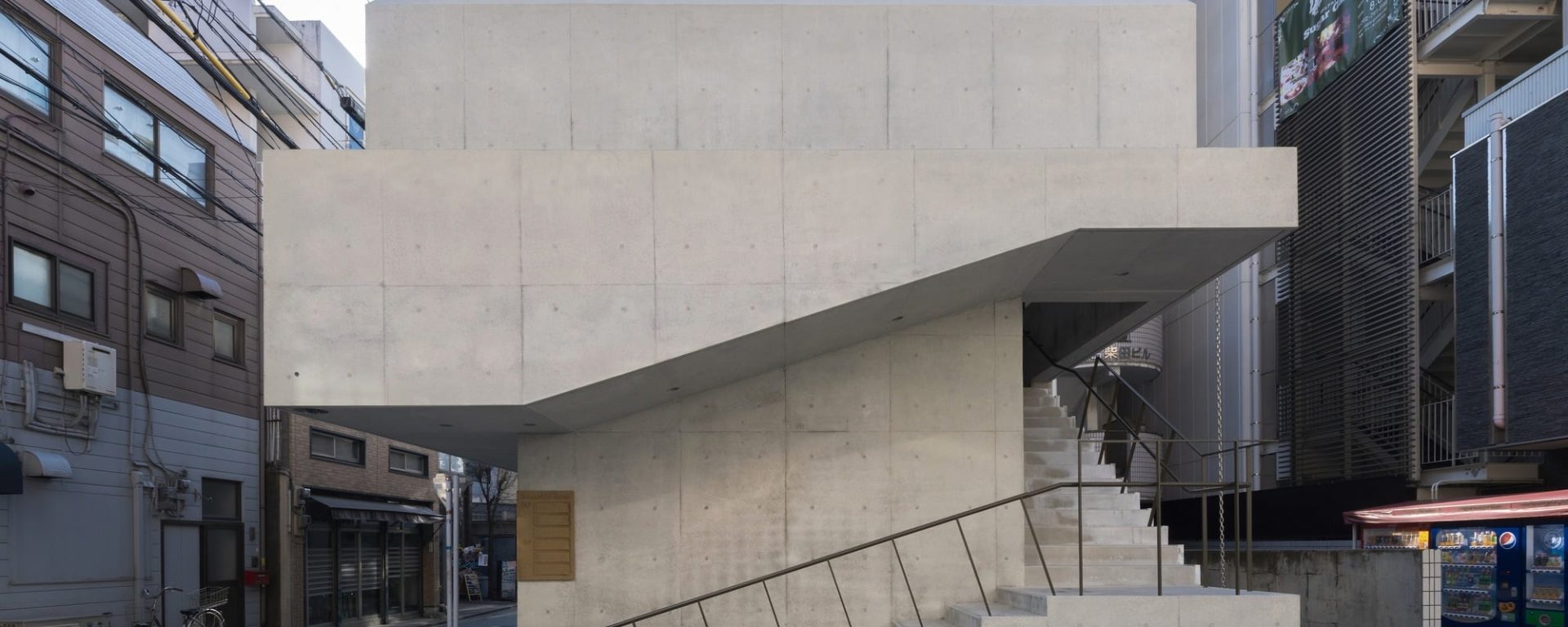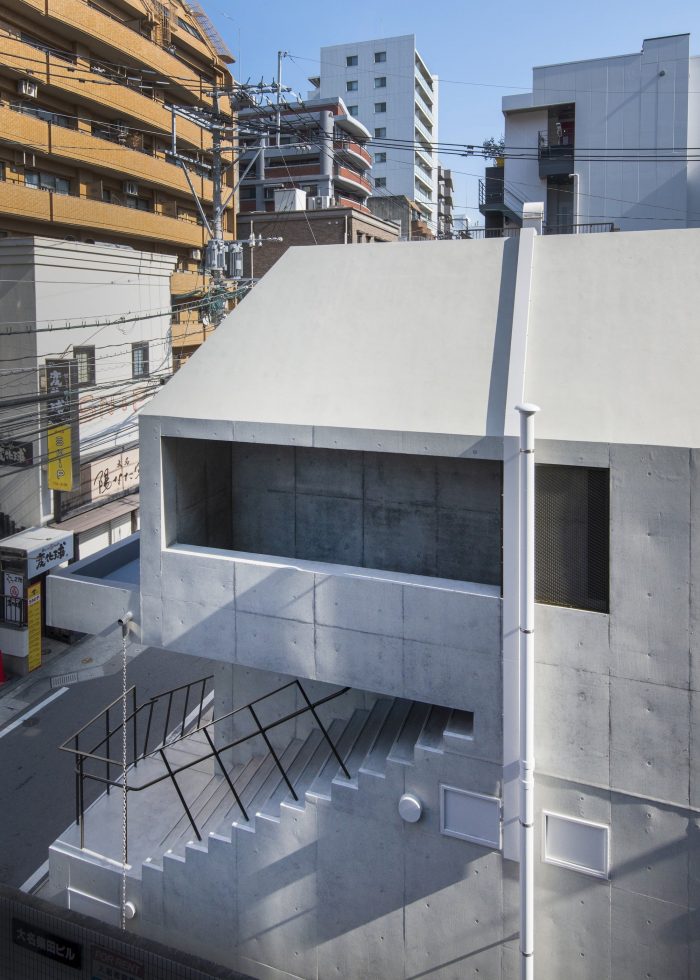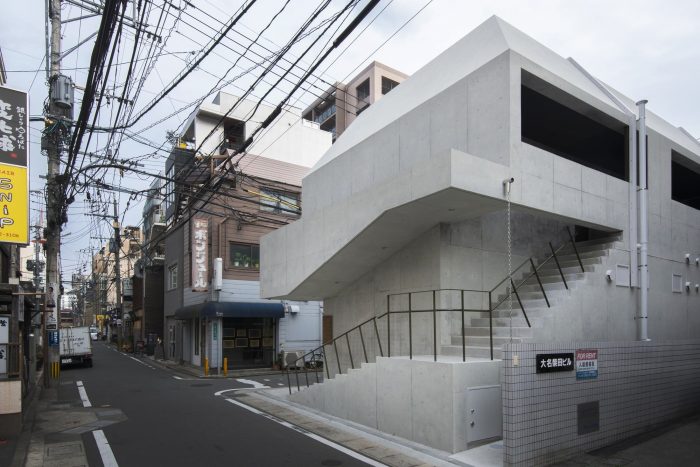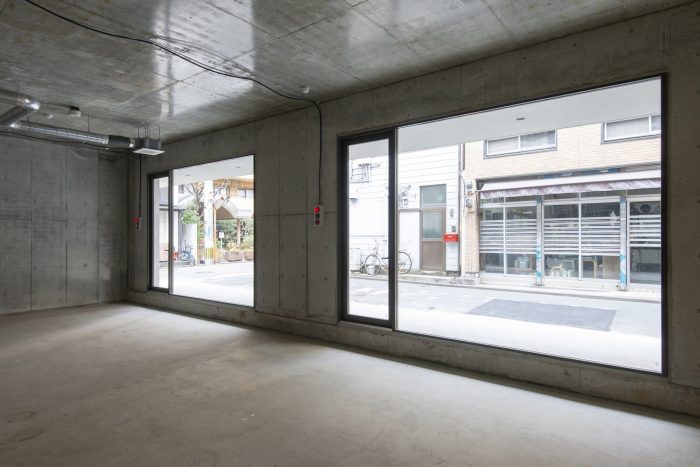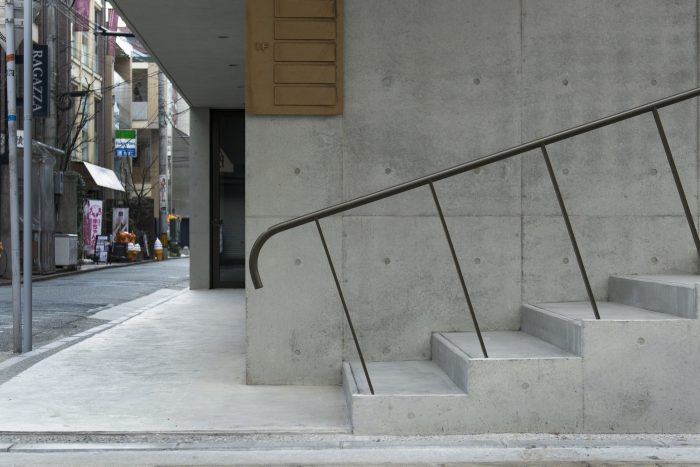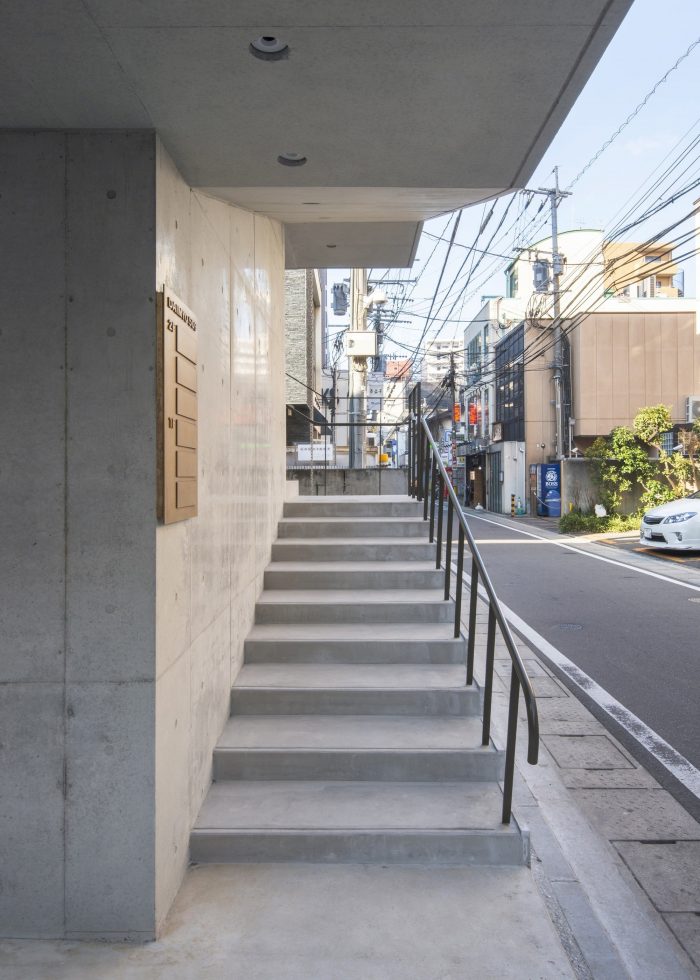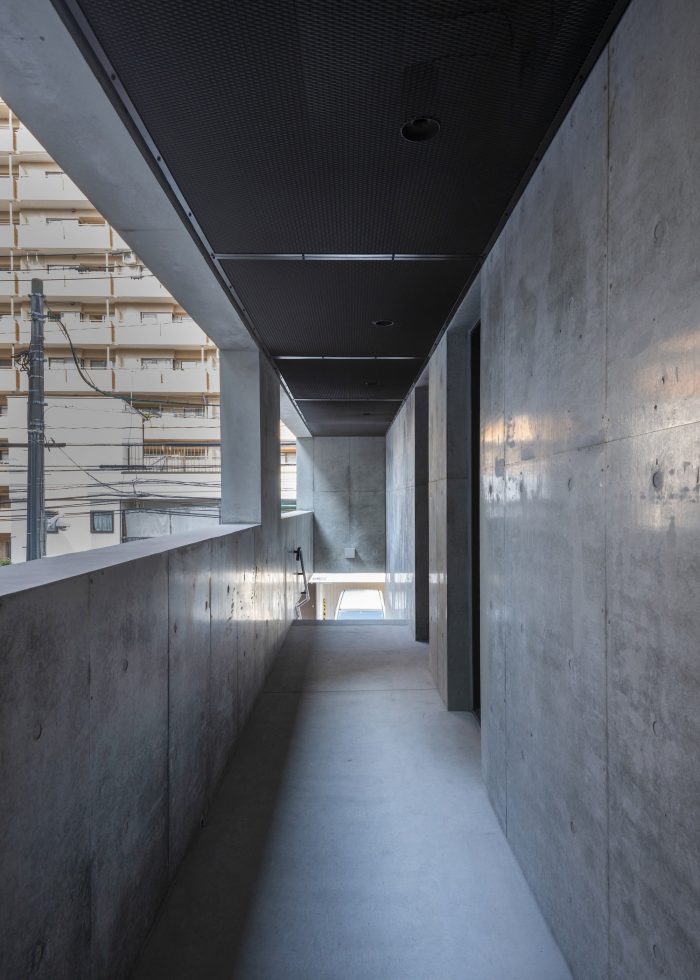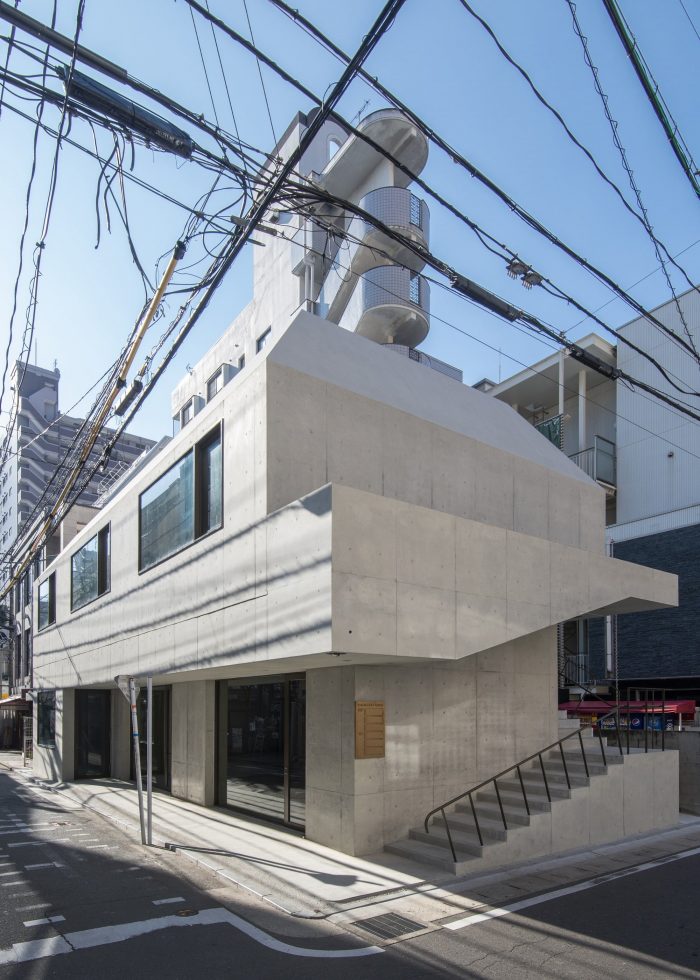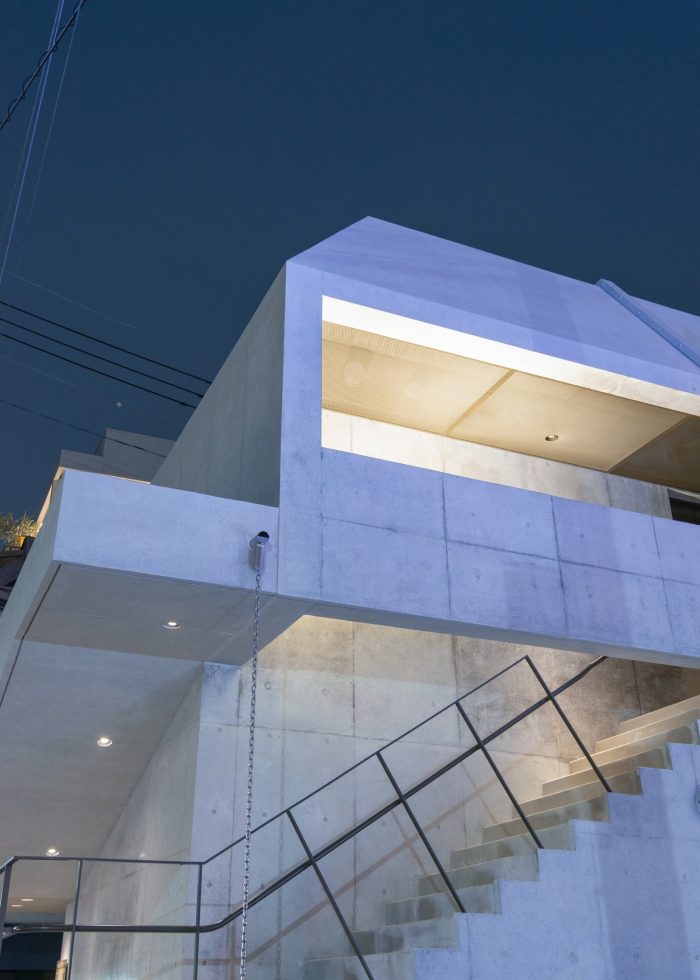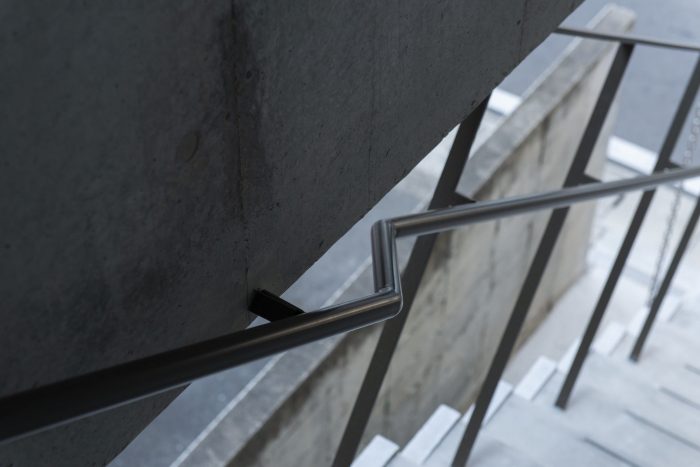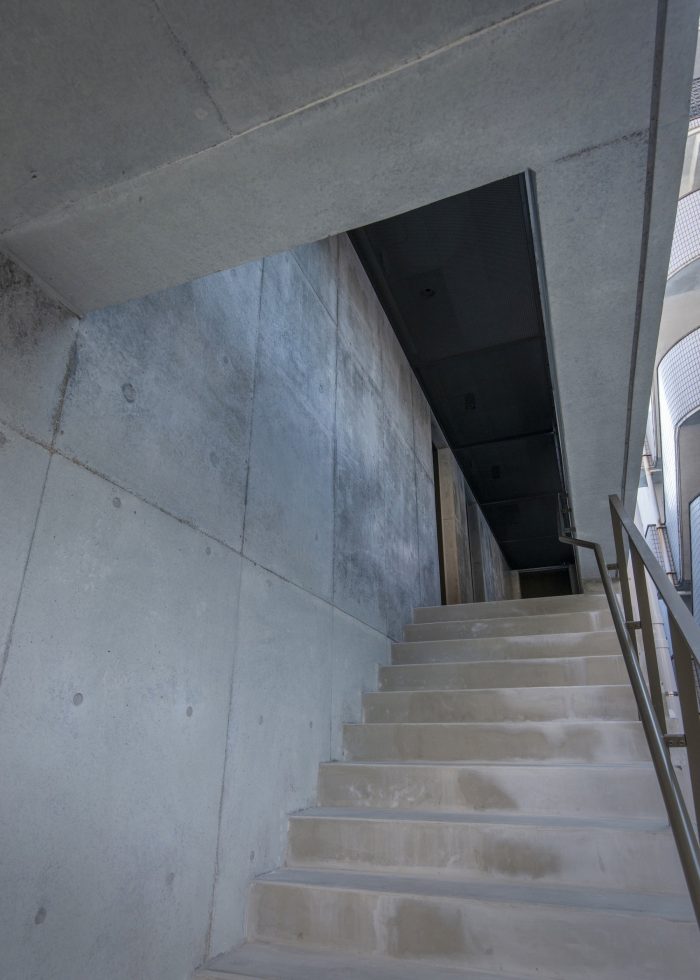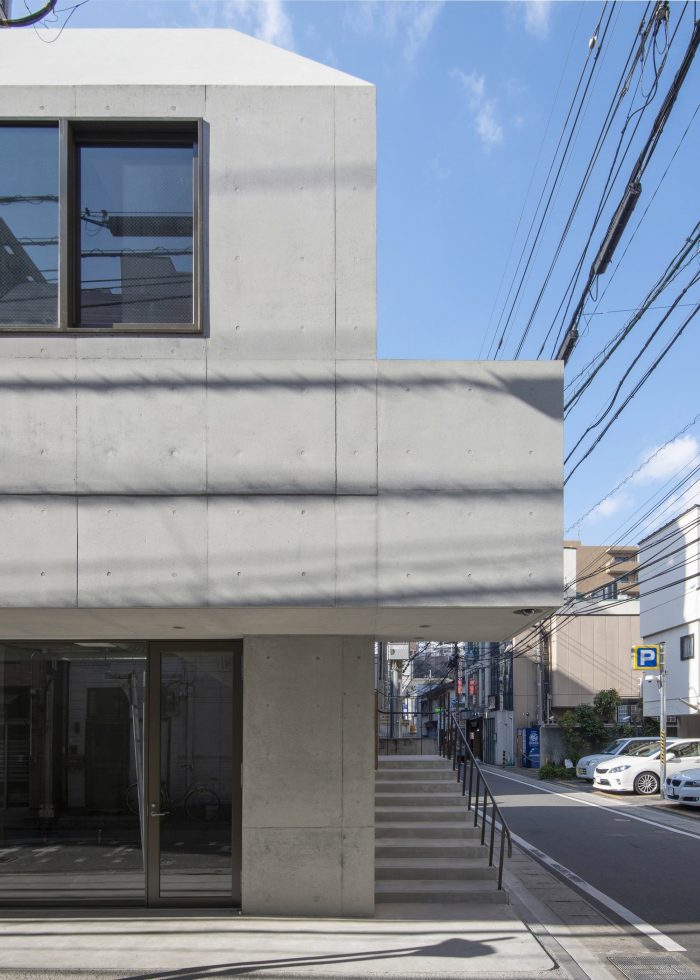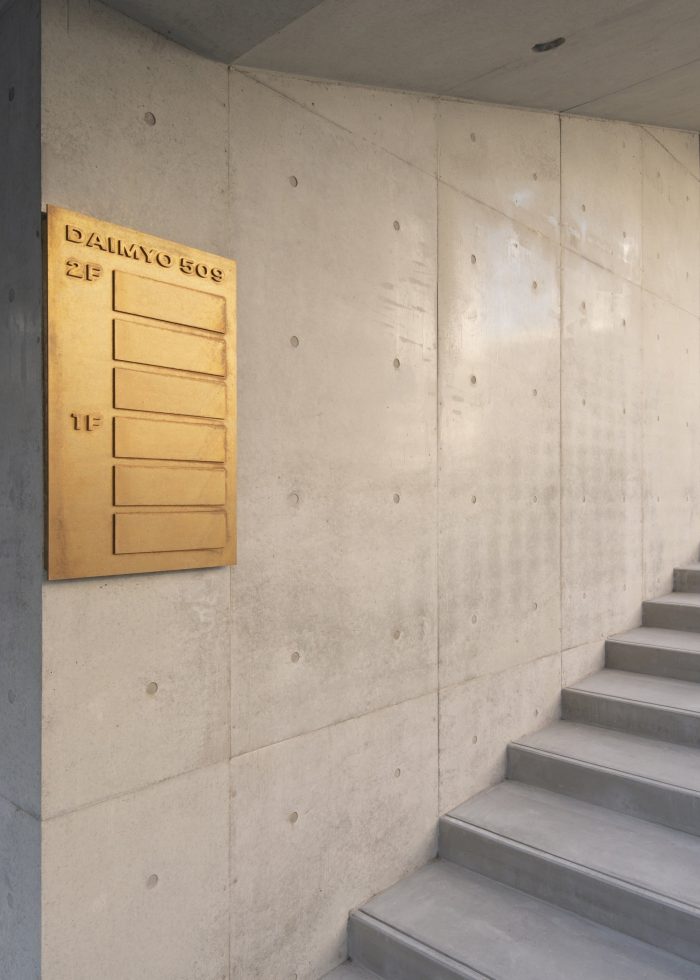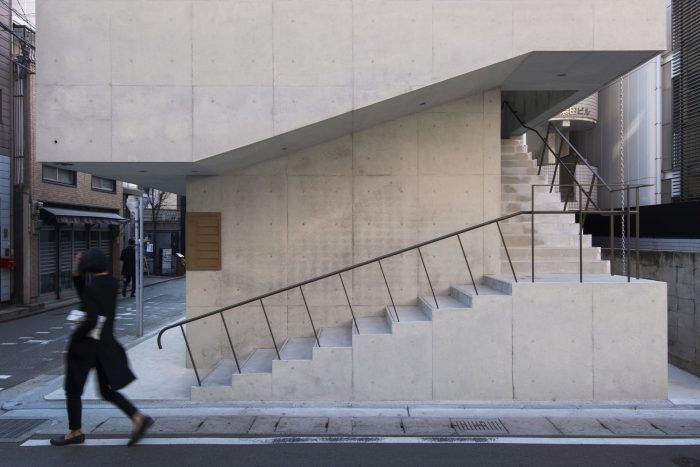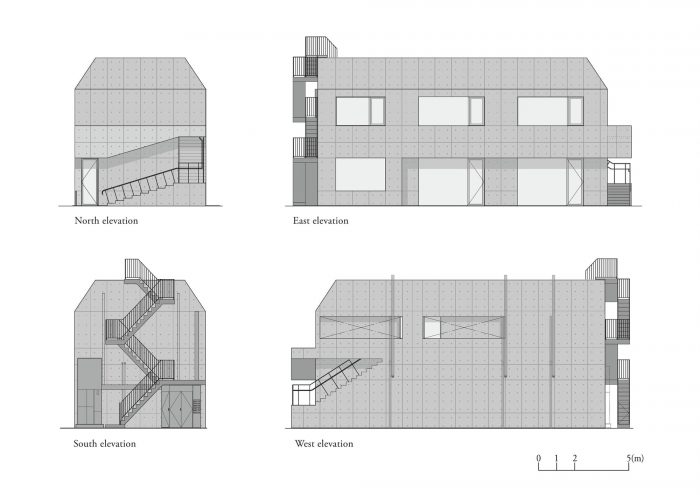大名是位于福冈市中心的一个商业区,沿着狭窄的街道有许多服装店和餐馆。与此相反,老房子仍然屹立不倒,这就形成了低层和高层建筑并存的独特氛围。
Daimyo is a commercial area located in the heart of Fukuoka city and is home to many clothing shops and restaurants along its narrow allies. In contrast to this, old houses still remain standing which creates a distinct atmosphere of low and high-level buildings co-existing.
客户给我们的任务是为高质量的租户设计一个2层的结构。我们决定用我们在商业空间设计方面的经验来处理这个任务,并将其融入建筑体量、结构和设施规划中。
The task we were given by our client was to design a 2-floor structure for high-quality tenants. We decided to approach this task with our experience from commercial space design and to adapt this into the architectural volume, structure and facility planning.
地面层的体量被后退,以创造一个空间,将小巷和建筑的关系分开,防止入口直接面对周围的街道。这种后退所创造的方式一直延续到连接上层的楼梯上。此外,楼梯的线条环绕着建筑,创造了其独特的外部印象。
The volume on the ground level was set back in order to create a space which separates the relationship of the alley from the building and preventing the entrance from directly facing the streets surrounding. The approach created by this set back continues to the staircase which connects to the upper floor. In addition, the line of the stair circles the building creating its distinct exterior impression.
整个建筑是以框架结构为基础的,但所有的柱子都被封闭在墙的深处。一般来说,在有限的区域内,可见的支柱被认为是对租户计划的限制,但通过成功地设计一个创造平坦空间的结构,我们能够为租户计划保持自由度。
The overall building was constructed based on a frame structure, but by having all its pillars enclosed in the depth of its walls. In general, visible pillars in limited zoning are considered as restrictions to the tenant plans, but by successfully designing a structure which creates a flat space, we were able to maintain the freeness for the tenant planning.
一些设施的出口/进气口,包括送风口和排气口都积聚在屋顶上。预先安排了预期的管道路线,以防止租户入住后对外部的影响。我们希望这个项目能成为城市的一块小基石,因为城市发展的频繁更换而导致城市的无序性。
The outlet/inlets for some of the facilities including air supply and exhausts were accumulated on the rooftop. Expected piping routes were pre-arranged to prevent effects to the exterior even after the tenants move in. We wish for this project to be a small foundation stone to a city with a disordered character due to the frequent replacements of urban developments.
Architects: CASE-REAL
Area : 113 m²
Year : 2018
Photographs :Hiroshi Mizusaki
Manufacturers : Modric, Takei Kougyou, YEV, Yamagiwa Lighting
Structural Engineer : Ohno JAPAN, Hirofumi Ohno, Satoru Fujimoto
Lighting Plan : ModuleX FUKUOKA
Schematic Design, Design Development, Design Supervision : Koichi Futatusmata, Tomoki Katada
Contract Design : Kyushukensetsu Co.Ltd., Haruka Higuchi
Contraction : Kyushukensetsu Co.Ltd., Nobuhiro Kajiyama
City : Fukuoka
Country : Japan

